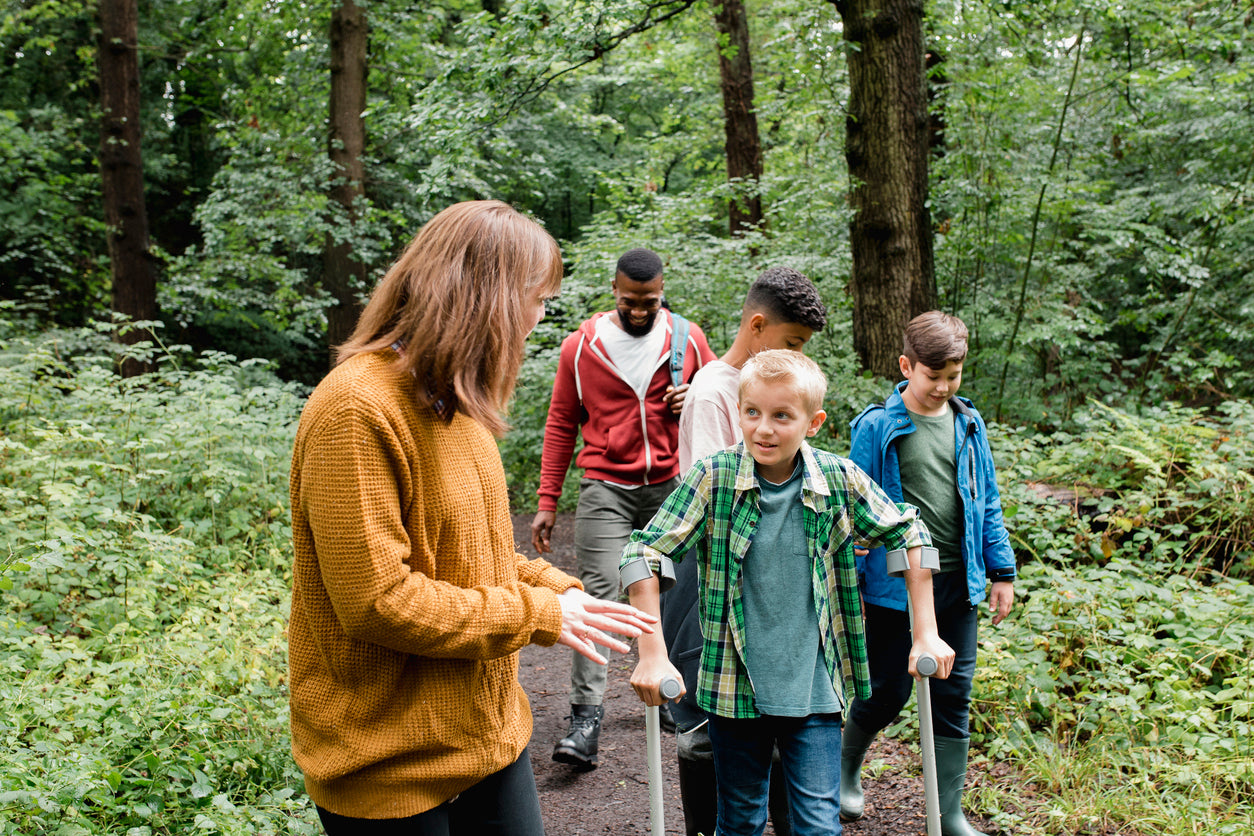Explore our collection of informative and educational blog posts to stay updated on the latest industry trends and expert advice.
29 Apps That Teach Creative Writing

Teaching creative writing means putting ideas first. It means resisting the urge to correct the writing and focusing instead on the development of the writer. And though it may seem counter-intuitive, doing so often requires questioning, ignoring, or even breaking the rules.
“We may be too literal when we think about what it means to be a good writer,” writes educator and speaker Jordan Shapiro for Forbes. “It is not all about letters and words.” Especially when it comes to teaching children, he says, we get caught up in structure, grammar, and syntax. But these things are what make writing polished and proper, not meaningful and engaging. And unless you want to turn kids off of writing for the rest of their lives, it’s best to focus on the latter, and to make it fun.
The State of Creative Writing Today
In the UK, primary schools are teaching children “not to use simple words such as ‘good’, ‘bad’, ‘small’ or ‘big’ but to always find other more ‘interesting’ words to replace them – such as ‘wonderful’, ‘terrible’, ‘minuscule’ or ‘enormous.’” A group of award-winning children’s authors say this is damaging students’ writing ability at an early age. What happens is, the more complicated words are presented as “better” alternatives to children, so they “fail to understand the nuances of their use, and they also fail to realise that they are relatively unusual,” and that “they are used sparingly in good writing.”
Cecilia Busby, who writes fantasy adventures for children as CJ Busby, told The Guardian her concerns about the teaching of creative writing were sparked a few years ago, when she was reading out a description of a character from her novel Frogspell to a year six class at a Devon primary school: “He is a gruff, burly knight with a deep voice and a large moustache who also happens to enjoy whacking his enemies with his big sword,” she told the class, only to be stopped by the teacher, who told her that “the word ‘big’ is one of the banned words in our classroom”.
This is another example of how we’ve become “too literal” in our writing instruction. Certainly, young writers should work to build rich vocabularies, but like syntax and grammar, that’s not what good writing is all about. We can’t throw vocabulary-building apps at children and expect them to come out the other side acing the writing portion of their college entrance exams. What we need to do is begin with engagement, not rigor.
“The very essence of writing is that it is an expressive and personal outlet, so should we really be limiting it at all?” says Ella Slater in a different piece for The Guardian. “Some argue that a child’s creativity is stimulated by the exploration of advanced vocabulary, but there really is a difference in being allowed to delve into the world of fancy words, and being forced to use them.”
In any case, it’s not all about the words. Author Nick Hesketh recommends that before children start writing, you should discuss what makes a good story. This can be explored through all types of media, from film to games to comics. What’s important is learning the big concepts behind narration and storytelling before focusing on small details like word choice and spelling. That’s why we’ve curated 29 apps for you that challenge young writers to think about the big picture. Take a look and feel free to add your own favourites to the comments section.
29 Creative Writing Apps
1. Hullabalu is a fast-paced arcade shooter with quirky graphics. Although users don’t make up their own stories, they get to explore the narrative world through a combination of animation, narration, written word, and mini games.
2. DipDap turns you into an animator. Dipdap comes with 16 beautifully animated adventures which prompt you to draw in missing objects that, once drawn, enable Dipdap to complete his mission. These adventures are designed to inspire a child’s imagination–turn off the set guides and the child is free to draw whatever they wish. Watch Dipdap respond to the lines drawn, then playback and share with friends and family.
3. Toontastic turns kids into animator, character designer, and storyteller. Kids use their fingers to move characters around the iPad and narrate at the same time. Toontastic records their movements and their voices and turns it into a fully animated cartoon.
4. StorySkeleton gives you the freedom to create structure for your writing projects on the iPhone, and export to a variety of useful formats, including native Scrivener and Final Draft documents.
5. List for Writers is a great addition to any writer’s toolbox. Helpful to both novice and expert writers alike, this app delivers list after list of prompts and ideas for your brainstorming sessions: names, character traits, plot lines, occupations, obsessions, action verbs, and much more.
6. Clean Writer lets you become more creative with the refreshing, distraction-free plain text editor that boosts inspiration and fights writer’s block by hiding away extra options.
7. My Writing Spot for iPad is one of the best apps for working on your novel or other writing project on the iPad. It provides a distraction-free writing environment, so you can focus on getting the words out of your head and into your manuscript.
9. Writing Prompts uses current events, scene elements, words, sketches, colors, genres, and writing types, unleashing endless random bits of fantasy to fuel your muse.
10. iDeas for Writing is a creativity trigger with thousand of great suggestions to give your stories a starting point.
11. Chapters lets you manage writing projects. Create as many notebooks as you want and fill each with as much as you need to write. It’s easy to create simple bullet lists and see a word count while you write.
12. Picturebook lets you choose from a constantly updating library of cute pictures. Narrate your story with any text you like. Add your own photos with an in-app purchase upgrade.
13. The Brainstormer is a tactile tool to randomly combine a plot, a subject, and a setting or style. It can provide that elusive moment of inspiration for writers, painters, or any kind of creative endeavour.
14. Story wheel is a fun writing prompt app helping kids get story ideas, as well as improvising skills.
15. Write About This is a visual writing prompt & creation platform. With endless ways to respond and the ability to craft custom photo prompts, it will kick-start any writing activity.
16. Writing Prompts for Kids lets kids choose different categories when choosing prompts. There are some cool features here, like alternatives to overused words.
17. Tellagami is a free app that lets kids tell a short story. Kids can type in with words or record it as voice, then the picked character will read the story out with light animations. Since it has word limit, kids won’t have the pressure to write long paragraphs. It is great for kids who just get started on writing.
18. GoodNotes is a note app that lets kids put handwritten notes on top of PDF or image files. It is a good tool for collaboration on writing or working on revisions.
19. StoryKit is a free writing app for kids to record their ideas, and write stories. When necessary, kids can record their ideas with voice, instead of writing. They can also add pictures for their story.
20. Educreations is a free app originally designed for teaching using writing and pictures. Educreation is a great tool for kids to record their thoughts and ideas for writing.
21. Scribble My Story is a nice storytelling tool for young children. Kids can follow the template to create their own stories, and can also use stickers or draw pictures to help the storytelling.
22. Book Creator is an app that is great for organising thoughts and ideas, collecting references and raw materials. Kids can use text, voice, image to organise ideas before they put the final writing together.
23. DoodleCast is designed as a presentation tool, but can be a good tool for keep track of writing ideas. With many sharing features, it is also a good collaboration tool between teachers and students or among several students.
24. Notability may be designed as a note taking tool, but many are using it as writing tool as well. It has very versatile features letting you keep and organise notes and ideas in many different ways. It also has good sharing features, allowing easy collaborations.
25. Haiku Deck provides easy templates and beautiful pictures to help kids express their ideas. The final production is not an article, but a presentation. However, it is a great tool to help kids organise thoughts, and learn to express their ideas with pictures as well.
26. Storyboard That is a online tool for kids to create stories with pre-made templates. Great for introducing kids to creative writing.
27. Story Spark generates scenarios, writing prompts, and new ideas to spark creativity in your own writing.
28. Novel in 30 will help you achieve your goal of writing a novel. When you’re actually writing, the dashboard will automatically get out of your way and you’ll be left with only your words. The writing environment is purposefully distraction-free.
29. Byword lets you continue writing across all your devices. Publish to WordPress, Tumblr, Blogger, Scriptogram blogs and Evernote notebooks directly from Byword.








